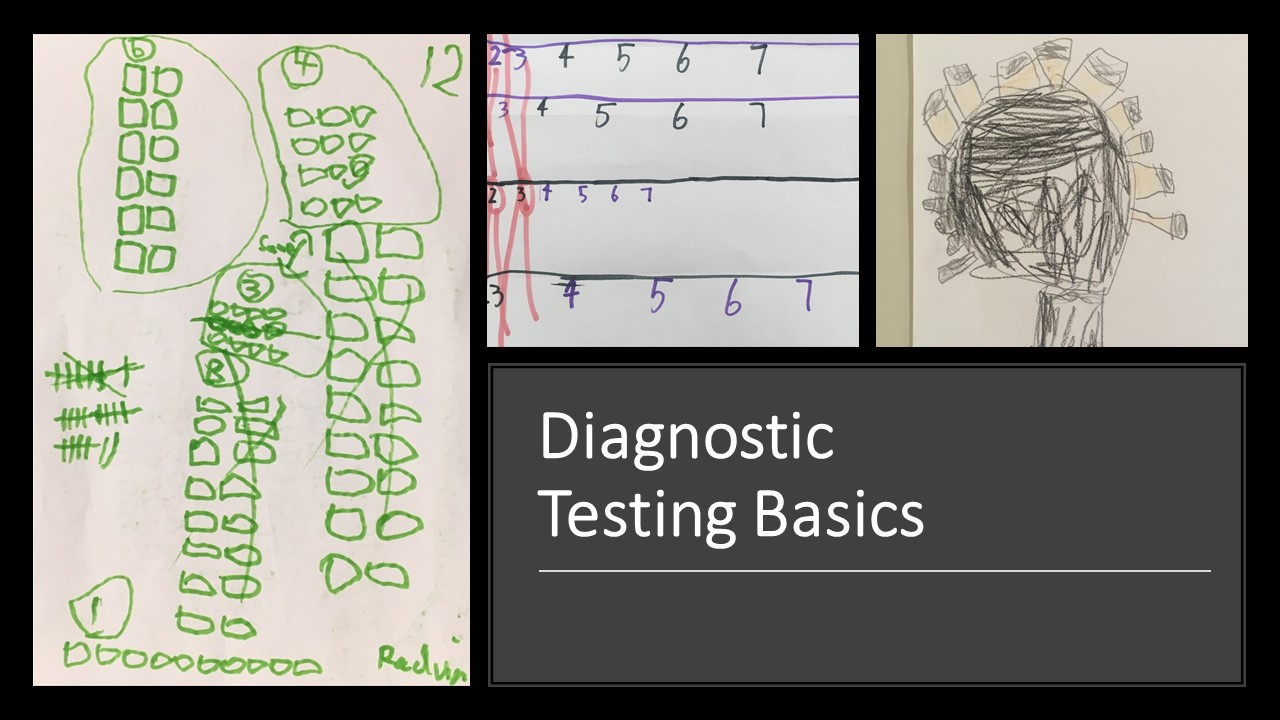
Formative assessment, developmental stages and starting the year well
The goal of formative assessment should always be to find out what each student NEEDS next, rather than focusing

We would love to add more too, so please comment with your own ideas and share the article with your friends!
This game can be played individually or in a group.
Preparation: Use spray paint, a permanent marker or even just stickers to colour one side of some counters.
To play: Begin with a known number of counters. Kids shake the counters in a cup and tip them out. How many black ones and how many red ones are there? Draw what you see and write the numbers on your drawing. Can you find all the ways to make that number?
Extension: To add complexity, put star stickers on some counters or add a third colour.
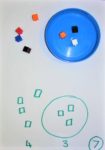
This is a game for two or more children.
To play: Begin with a known number of counters (teddy bear ones are great). One child hides some of the counters under a cup or bowl. The other children look at the remaining counters and try to figure out how many are hiding. Everyone draws a circle to be the bowl/cup, with the correct number of counters beside the circle and their guess at how many are hiding inside the circle. Lift the bowl to check!
Extension: play with two cups, both having the same amount hidden.
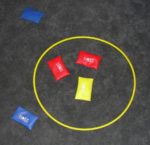
This game can be played individually or in a small group.
Preparation: You will need a hoop or other target and something to throw (we suggest bean bags).
To play: Children take turns throwing a given number of items into the hoop. How many land in/out? Draw them, then check.
Extension: Use a target with different sections and use different numbers of points for hitting particular parts of the target. Add up the totals each time.
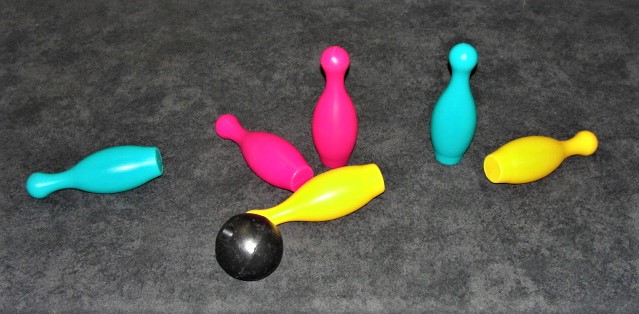 This game is best played in pairs or small groups.
This game is best played in pairs or small groups.
Preparation: You will need a set of skittles, or plastic bottles, and a ball.
To play: Set up 6-10 skittles. Take turns bowling once and recording how many down/up?
Extension: Use two different colours for the skittles. Further extenstion: one colour is 2 points and the other colour is 3 points.
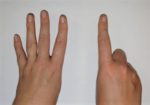
To play: Instead of giving kids high fives, we do “cool high fives” by partitioning five fingers onto two hands! We also love making any number between 5 and 15 with a partner, using some of the fingers on two, three or four hands. This is a great game to play outside the library while waiting for the teacher-librarian to arrive.
Extension: Some numbers are banned. For example, make 6 fingers using 3 hands, but without using the number 2.
This game can be played by the whole class, but it is best done in an area with lots of space.
To play: The teacher calls out, “Make a group with 7 feet!” Children have to form groups with that many feet, including having some of them standing on only one foot. The aim is to have everyone in the class included in a group.
Extension: The teacher finds children who have missed out on a group and takes them to a group with the instruction, “This person has to be included but you still have to have 7 feet.”
This game is played in pairs.
To play: Pairs of children sit opposite each other, with a barrier between them (book standing upright, piece of card folded to stand up). The barrier is used to separate a given number of blocks to either side. Using the blocks that they can see on their own side, children guess how many their partner has.
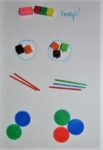
This game is played individually. Variations include using counters, match sticks or beads.
To play: Form a given number of unifix blocks into a stick and “snap” it into two parts. Draw the parts. How many different combinations can you find?
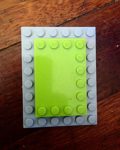
This can be played as an organised game, but tends to best happen naturally when the teacher simply asks questions while playing with Lego.
To play: simply ask, “Which blocks could we use to cover this 12 block? What else do I need”
Extension: How many dots are hidden under this block?
This can be done as an individual activity or in pairs.
To play: Use two dice to make a target number, then draw them.
Extension: The two dice can be used for either addition or subtraction. Use 10 sided dice.
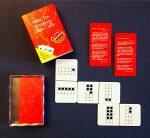
This game is played in small groups. It is particularly great because it is not competitive and encourages cooperation.
Preparation: You will need to make your own dominoes, or simply buy pre-made plastic cards here.
To play: Children take it in turns to join on a dominoe card that “makes ten”, rather than joining on the same amount. The aim is to connect all of the cards as a group, and to have them all fit on the table! Children are encouraged to help each other.
Extension: Make other amounts, including using subtraction to make amounts smaller than 10.
 12. Dice shaker to get as close as possible to a total:
12. Dice shaker to get as close as possible to a total:This game is played individually or in pairs, but can be played as a whole class.
To play: Choose a target number. Shake the dice shaker, and use the numbers to try and get as close as possible to the target number. I encourage kids to use any operation that they want and as many of the numbers as they want, to build fluency.
Extension: Any one of the numbers can be used twice to get to the total.
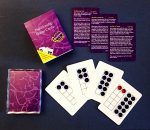
This game is played by pairs or small groups of children.
Preparation: You will need to make your own partitioning cards, or purchase ready-made cards from here.
 To play: This game is similar to “go fish”, except that children need to make pairs of cards that add or subtract to a particular total. For example, if the specified total was 7 and I had the cards pictured above, I could make a pair from the 12 and the 5.
To play: This game is similar to “go fish”, except that children need to make pairs of cards that add or subtract to a particular total. For example, if the specified total was 7 and I had the cards pictured above, I could make a pair from the 12 and the 5.
Extension: Play “Go fish in threes”, where any three cards form a set as long as the two smaller numbers add together to make the larger number. Instructions for 11 variations are included in the card pack.
This game is a challenge for two or three children.
Preparation: You will need single digit or partitioning cards, which can be purchased here.
To play: Use all of the cards in the pack to match pairs that make a particular total. Both addition and subtraction can be used.
This game can be played by 3-4 children, but can also be played individually.
To play: Set the cards out, face down and decide on a target number. Take it in turns to turn over two cards at a time. A pair is formed when the cards add or subtract to make the total.
Extension: Three cards are used to form a set that makes the target number.
If you liked these ideas, you might like to:

The goal of formative assessment should always be to find out what each student NEEDS next, rather than focusing
Recently I’ve been pondering findings from a major report into Australian schooling that kids who are struggling in maths by

Extension can be a tricky issue to deal with. While we can try to have extension questions for most in-class
Setting the scene for risk-taking One of the most difficult problems to overcome when establishing a problem-based classroom is encouraging
by Tierney Kennedy Why is it that so much of education research goes seemingly unnoticed or ignored by teachers (Joram
As term 4 is upon us many teachers are struggling with how to get everything done. Realistically, now is the

KENNEDY PRESS PTY LTD
FOR ALL ENQUIRIES, ORDERS AND TO ARRANGE PD:
© COPYRIGHT 2024 KENNEDY PRESS PTY LTD ALL RIGHTS RESERVED TERMS & CONDITIONS